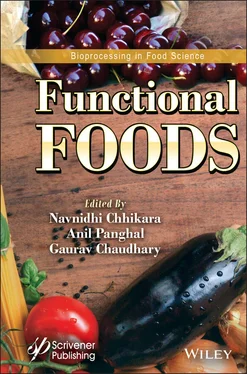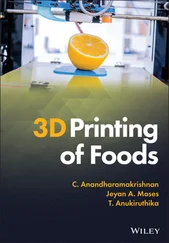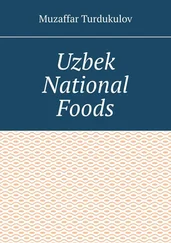Functional Foods
Здесь есть возможность читать онлайн «Functional Foods» — ознакомительный отрывок электронной книги совершенно бесплатно, а после прочтения отрывка купить полную версию. В некоторых случаях можно слушать аудио, скачать через торрент в формате fb2 и присутствует краткое содержание. Жанр: unrecognised, на английском языке. Описание произведения, (предисловие) а так же отзывы посетителей доступны на портале библиотеки ЛибКат.
- Название:Functional Foods
- Автор:
- Жанр:
- Год:неизвестен
- ISBN:нет данных
- Рейтинг книги:3 / 5. Голосов: 1
-
Избранное:Добавить в избранное
- Отзывы:
-
Ваша оценка:
- 60
- 1
- 2
- 3
- 4
- 5
Functional Foods: краткое содержание, описание и аннотация
Предлагаем к чтению аннотацию, описание, краткое содержание или предисловие (зависит от того, что написал сам автор книги «Functional Foods»). Если вы не нашли необходимую информацию о книге — напишите в комментариях, мы постараемся отыскать её.
Presenting cutting-edge information on new and emerging food engineering processes,
, the second volume in the groundbreaking new series, “Bioprocessing in Food Science,” is an essential reference on the modeling, quality, safety, and technologies associated with food processing operations today.
This outstanding new volume:
Audience: Functional Foods
Functional Foods — читать онлайн ознакомительный отрывок
Ниже представлен текст книги, разбитый по страницам. Система сохранения места последней прочитанной страницы, позволяет с удобством читать онлайн бесплатно книгу «Functional Foods», без необходимости каждый раз заново искать на чём Вы остановились. Поставьте закладку, и сможете в любой момент перейти на страницу, на которой закончили чтение.
Интервал:
Закладка:
2.3 Prebiotic Dairy Functional Foods
Prebiotics can change the quality characteristics of dairy products, mainly because they can interact with the components of the matrix. Inulin and oligofructose are the main prebiotics used in dairy products, and the effect of their addition is dependent on their DP [25]. Therefore, inulin-type fructans can be added as ingredients in functional products and can improve the nutritional, technological, and functional properties of the products. Inulin has a higher DP, therefore, its sweetness is low (< 10% compared to sucrose) and is moderately soluble in water (10% at ambient temperature) [45]. It is used as a fat replacer in dairy products, due to the ability to promote in the mouth a sensation similar to that of fat. It can form microcrystals when mixed with water or milk, which are not perceived in the mouth, but interact and result in a finely creamy texture [25]. On the other hand, oligofructoses have properties similar to those glucose syrups and sugar, as they have a greater number of free sugars. Sweetness in its pure form is 30 to 35% when compared to sucrose, and it has a low caloric value (1 to 2 kcal/g) [46]. Thus, they are used to prepare functional dairy products low concentrations of sugar. For these reasons, inulin and oligofructose are widely applied in the dairy industry [45]. The application of prebiotics has been described as showing promising results in yogurts and fermented milks. Table 2.3describes applications of prebiotic agents in fermented milk and dairy beverages.
The utilization of inulin and fructooligosaccharides as fat replacer in sheep milk ice cream resulted in products with similar rheological properties (viscoelasticity, hardness, and consistency) compared to the full-fat product. Furthermore, the prebiotic formulations were perceived to be creamier and shinier than the control sample. In addition, most prebiotic ice creams were mentioned as being sweeter, which suggests that the prebiotics can replace conventional sweeteners [59]. Therefore, inulin and fructooligosaccharides can improve the functional, physiological, and nutritional properties of ice cream, reducing the caloric value and increasing the functionality of the products [60]. In addition, inulin can help to control the crystallization and recrystallization of frozen dairy products [61].
Inulin has also been widely used in cheese as a fat substitute [45]. Non-fat cheeses may have rheological, texture, sensory and functional defects, such as a rubber texture characteristic, flavor alterations, increased bitterness, unpleasant taste, altered melting capacity, and non-typical color [62]. Thus, it is a technological challenge to use fat substitutes that maintain the same sensory and functional properties as cheese without reducing their fat content [63]. In this sense, inulin seems to be suitable for replacing fat in cheeses with low-fat content, as it improves the feeling of softness in the mouth [64]. This feeling of creaminess is generated through the encapsulation of a large amount of water and complexation with protein aggregates [52, 65].
Table 2.3 Some examples of the application of prebiotic agents in fermented milk and dairy beverages. Adapted from Dantas et al . [47].
| Dairy product | Prebiotic | Reference |
| Fermented milk | Inulin | [48] |
| Soursop dairy beverage | Inulin | [49] |
| Sheep milk yogurt | Inulin | [50] |
| Low-fat yogurt | Inulin and agave fructans | [51] |
| Low-fat yogurt | Inulins with varied DPs | [52] |
| Low-fat yogurt | Inulin | [53] |
| Low-fat yogurt | Inulin | [54] |
| Low-fat yogurt | Inulins with varied DPs | [55] |
| Yogurt | Oligofructose | [56] |
| Yogurt | Asparagus fiber | [57] |
| Yogurt | Inulin and potential prebiotics from commercial apple, wheat, and bamboo fibers | [58] |
The ability to replace fat is higher in long-chain and inulin with high molecular weight. The high DP results in a lower solubility of inulin, increasing its ability to form microcrystals when added to milk. The addition of long-chain inulin (5%) in a fresh Kashar cheese (70% fat reduction) resulted in softer product (lower hardness), which was attributed to the alterations in the chemical composition (higher moisture) and to the higher cheese volume, with a consequent decrease in the protein content [66]. When inulin was used at 10% concentration, a cheese with creamy texture and chemical characteristics similar to the full-fat cheese was obtained [63]. When compared to other fibers, inulin had better results on fat substitution in mozzarella cheese than methoxypectin, polydextrose, and resistant starch [67]. Long-chain inulin was used as fat substitute (2, 3, and 7%) in fresh goat milk cheese, and the inulin-added product showed a less compact structure compared to the conventional cheese, which was associated with the lower fat distribution in the matrix. Inulin was incorporated in the casein network, interrupting the casein network, and resulting in a softer gel structure [68].
Galactooligosaccharides can be easily added to dairy products, such as yogurt, ice cream, dehydrated buttermilk, and dairy beverages due to their excellent solubility. In ice cream, galactooligosaccharides have a positive effect on optical, physical-chemical, and sensory characteristics. The products with inulin showed higher firmness and lower melting rate, resulting in a product with greater stability. Furthermore, they presented better flavor and sensory attributes [69]. In yogurt, galactooligosaccharides can be added before or after fermentation, and the structure of the yogurt becomes smoother and more creamy. In addition, the bacteria used to make yogurt do not use galactooligosaccharides as a carbon source, which prevents it from being metabolized until it reaches the large intestine [70]. It is also possible to produce powdered buttermilk containing galactooligosaccharides in its formulation. This product can be easily used, for example, in the preparation of fermented dairy products [71].
Xylooligosaccharides are used in the formulation of prebiotic dairy products. The physicochemical and sensory aspects of yogurt enriched with xylooligosaccharides were compared to those with yogurts containing gelatin. The pH, acidity, and total solids were significantly affected by the addition of xylooligosaccharides. The taste and overall acceptability were not impacted by xylooligosaccharides addition (< 3.5%), but an increased residual flavor was observed [72]. In addition, yogurt enriched with xylooligosaccharides showed significant improvement in mineral absorption and reduced glucose content in rats [73]. Thus, xylooligosaccharides can be used as a functional compound in the formulation of dairy products with health benefits. Cream cheese with xylooligosaccharides showed a more compact and denser structure, with higher apparent viscosity, firmness, and elasticity. Furthermore, it improved the physicochemical properties (decreased particle size and viscosity and increased melting rate), rheological characteristics, and sensory characteristics (improved acidic flavor and salty taste, and better homogeneity, and less bitter taste) [74].
2.4 Synbiotics
The concept of synbiotic was described at first time about 25 years ago, and it involved the combination of probiotics and non-digestible ingredients that could be selectively fermented (prebiotics). Thus, synbiotics were reported as mixtures of “probiotics and prebiotics that beneficially affect the host” [9]. The term was composed by the Greek prefix “syn”, which means “together” and the suffix “biotic”, which means “belonging to life”. However, confusion about synbiotic products remained, in part, because the original definition “mixtures of probiotics and prebi-otics that beneficially affect the host, improving survival and implantation in the gastrointestinal tract, selectively stimulating the growth and/or activation of the metabolism of one or a limited number of health-promoting bacteria, and thus improving the host’s well-being” lacked precision. Furthermore, the inclusion of other agents in the ‘–biotics’ category, including post-biotic [75] and pharmabiotics [76], may further contribute to the confusion. In May 2019, a panel updated the definition of synbiotic to “a mixture containing living microorganisms and substrate(s) used selectively by host microorganisms that confer a benefit to the host’s health”. The panel reported that defining synbiotics simply as a mixture of probiotics and prebiotics could preclude the innovation of synbiot-ics that are produced to work cooperatively. Therefore, the requirement that each component must meet for evidence of its action and the dose established for probiotics and prebiotics individually could represent an obstacle. A complementary synbiotic could not be designed for its parts to work cooperatively and, therefore, must be composed of a probiotic plus a prebiotic ( Figure 2.2). Thus, in a complementary synbiotic, the prebiotic and probiotic works independently to achieve at least one health effect [15]. On the other hand, a synergistic synbiotic is where the substrate is designed to be used selectively by the probiotic microorganisms administered together ( Figure 2.3). The mixture of the selectively utilized substrate (prebiotic) and a live microorganism (probiotic) works together to achieve at least one health effect [15].
Читать дальшеИнтервал:
Закладка:
Похожие книги на «Functional Foods»
Представляем Вашему вниманию похожие книги на «Functional Foods» списком для выбора. Мы отобрали схожую по названию и смыслу литературу в надежде предоставить читателям больше вариантов отыскать новые, интересные, ещё непрочитанные произведения.
Обсуждение, отзывы о книге «Functional Foods» и просто собственные мнения читателей. Оставьте ваши комментарии, напишите, что Вы думаете о произведении, его смысле или главных героях. Укажите что конкретно понравилось, а что нет, и почему Вы так считаете.










